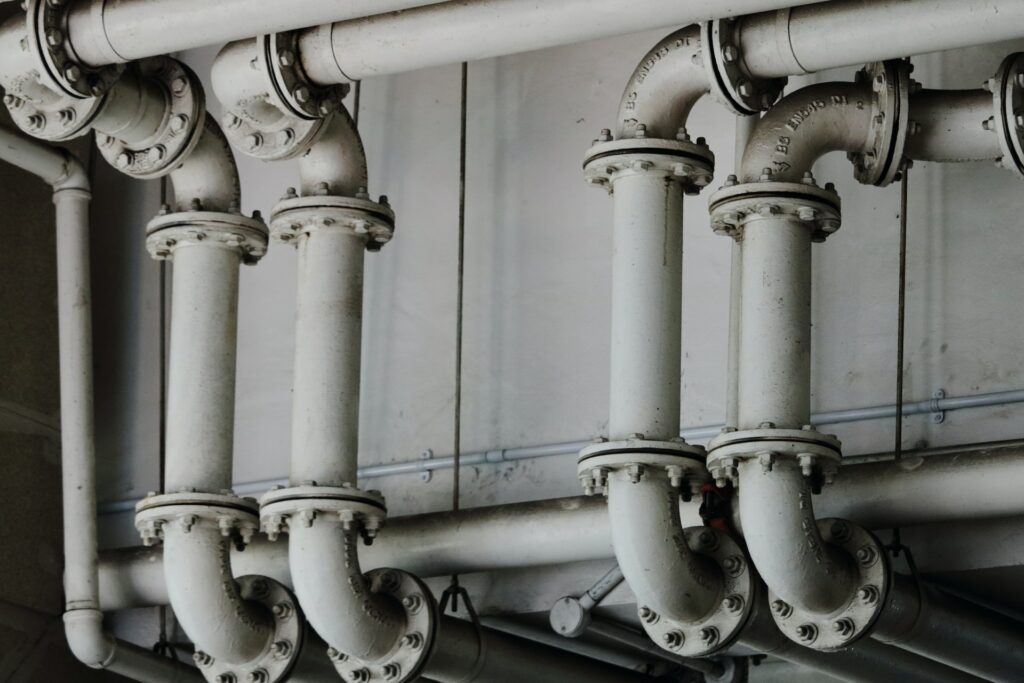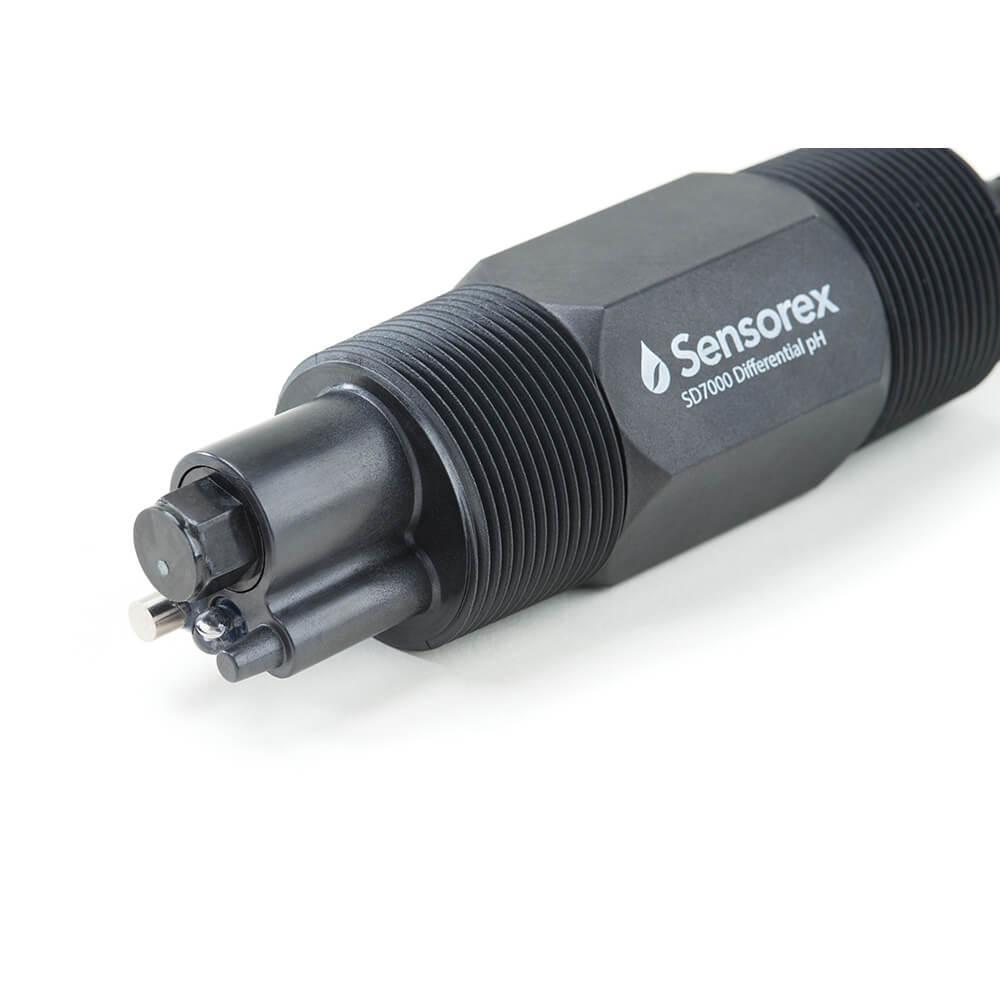01/10/2023 | Industrial Water Treatment | 8 MINUTE READ
The Importance of pH Control Equipment for Biogas Digesters

Biogas is a kind of biofuel that’s produced naturally when organic waste is decomposed. The organic matter that can be used for this process includes everything from leftover food to animal waste. When this matter is placed into an anaerobic environment, gases like carbon dioxide and methane are released into the atmosphere. Keep in mind that an anaerobic environment is one that doesn’t contain oxygen.
The process that results in biogas being produced is referred to as anaerobic digestion. In order for this form of digestion to occur, the waste must be placed into a biogas digester, which is a single tank that’s kept free from air and water. Along with food scraps and animal manure, sewage and wastewater can also be used to generate biogas. This fuel is flammable and produces a blue flame.
When you’re using a biogas digester to produce this fuel, among the most important pieces of equipment that should be used in the process include pH control equipment. When this equipment is properly installed, you’ll be able to make sure that the fermentation process occurs in an efficient manner. In fact, pH levels may need to be monitored continuously to ensure that any pH imbalances are corrected immediately after they occur.
In the event that a pH imbalance continues for an extended period of time, hazardous sulphur dioxide could be produced, which also means that any biogas production would be stopped. You can outfit your biogas digester with a pH dosing system to keep this issue at bay. If your biogas digester is a small system, only a small amount of materials should be placed into the unit at a time to make sure that biogas production isn’t slowed down. If you’re using biogas digesters in larger plants and industrial facilities, monitoring the system with a pH sensor is highly recommended.
The bacteria involved with the anaerobic processes are sensitive to pH and will slow down when the substrate pH is outside of the optimal range. In most cases, the best pH for anaerobic digestion is around 6.8-7.0. If the pH is properly balanced, there’s still a possibility for the digestion process to be slowed down. However, this issue is considerably less likely to occur. This guide goes into more detail about biogas digesters and the importance of outfitting them with pH control equipment.
Why is pH Importance in Biogas Production?
As touched upon previously, maintaining correct pH levels is essential for biogas production because of the possibility that production will come to a stop when pH levels are outside of the optimal range. Along with pH levels, the right amount of feedstock must also be maintained, which can include processed plant material, food waste, and sludge. If these substances are incorrectly mixed, the biogas production could become inefficient.
Once the feedstock is combined and placed into the biogas digester, it will be broken down by various microorganisms until it eventually turns into methane gas. When you’re attempting to complete this process, the media that you use should have the correct pH. While a neutral pH of 7.0 is ideal, the range that the pH should never move out of is 6.0-8.0. If you properly maintain the pH while the feedstock is in the biogas digester, this is one less factor that you’ll need to contend with.
Where Does FOS/TAC Come In?
The anaerobic digestion process that occurs in biogas digesters is a dynamic one, which is why plant operators must identify if the right amount of organic matter has been placed in the system to maintain healthy bacteria levels. The waste mixture should also have a substantial buffering capacity to ensure that changes in pH levels are kept to a minimum.
In order to maintain these processes, the most critical measurement that will occur involves identifying the total inorganic carbon (TAC) and volatile organic acids (FOS). This measurement is referred to as the alkalinity ratio, which is an indicator of the stability of biogas digesters based on their buffer capacity and volatile fatty acids content. When these levels are correctly maintained, acidification issues should be effectively prevented. You’ll also be able to measure the risk that your biogas digesters have of developing acidification.
The FOS/TAC ratio is regularly used in combination with pH measurements to determine if remedial actions must be taken to keep the biogas digester at maximum efficiency. If you’re using biogas digesters at a commercial level, daily monitoring of pH levels is required, which allows you to avoid performance problems at your plant because of an imbalance with your feedstock load.
The worst-case scenario is that the feedstock imbalance will result in the entire biogas production process needing to be restarted, which would lead to a substantial amount of wasted time and money.

How to Analyze FOS/TAC?
There are many sensors and tools available to you that are outfitted with a built-in FOS/TAC measurement to ensure daily analysis of your biogas digester systems. The tools you decide to use should be equipped with interchangeable burette heads as well as pre-programmed methods that allow different parameters to be analyzed.
Anaerobic Digesters
An anaerobic digester is an oxygen-free tank that’s tightly sealed to make sure that the waste can be processed without any oxygen leaking in. These tanks can be used for the anaerobic digestion of sewage and other types of organic waste. Along with waste disposal, these digesters can help you produce energy.

Uses for Sewage Sludge Digestion
When sludge digestion is being performed, the right amount of alkalinity will likely be present without needing to add any to the solution. This substance is produced when the amino acids and protein in the waste are broken down to create NH3. The NH3 element will then combine with the H2O and CO2 elements to create alkalinity as NH4. When you conduct pH monitoring in these digesters, you’ll be able to obtain early warnings that abnormal readings have been measured, which gives you time to correct the issue without losing out on some biogas production time.
Uses for Industrial Wastewater Applications
Anaerobic digesters are regularly used in industrial wastewater applications to create biogas with waste that consists primarily of carbohydrates. Keep in mind that alkalinity must be added for optimal pH control. Along with pH monitoring equipment, you should also have pH chemical dosing equipment on hand.
pH Control Equipment for Biogas Digesters
There are several different types of pH control equipment that should be available in your facility if you want to keep track of pH levels at all times. Because of how complex this monitoring can be, plant operators should be trained in biochemistry and water chemistry to understand what actions must be taken when a digester reaction doesn’t occur as it should.
If pH levels become imbalanced, corrective actions should be taken immediately. The two primary types of equipment that you should use in a biogas digester include a high-quality pH sensor and pH chemical dosing equipment that will automatically dose the water with the correct chemicals when pH levels become imbalanced.

pH Control Equipment for Digestion of Wastes
While all biogas digesters have similar functions, they are designed to accommodate different types of feedstock, which means that the incoming alkalinity that enters the system can vary by a considerable amount. When you continuously monitor the feedstock as well as the digester, you can determine if your dosing equipment is functioning correctly.
The dosing equipment that you use should be set at a wide pH range that extends from 6.0-8.0. If pH levels ever extend outside of this range, the dosing equipment can place chemicals into the waste to improve the pH. Regular analysis of the system’s alkalinity should also be performed to accurately predict what the buffering capacity should be for the feed materials.
Since the pH can drop too low or increase too high, you might be required to include acid and alkaline dosing provisions. If the plant operator isn’t able to manually balance feedstock content, the dosing provisions would be in place to keep the biogas digesters operational.
Animal Waste
Animal waste is commonly used in biogas digesters to produce this type of fuel. The equipment you outfit your digester with largely depends on how much animal waste is being placed into the system. When using a larger system, pH sensors and pH dosing equipment should be used.
Municipal Solid Waste
Municipal solid waste can be turned into biogas for energy purposes. This type of waste is mainly comprised of trash, which can include grass clippings, clothing, product packaging, furniture, food scraps, paint, and appliances.
Seasonal Biomass
The different conditions in nature can result in seasonal biomass changes that require different equipment. If only a small amount of waste is produced during a certain time of the year, constant pH monitoring might not be necessary.
Biogas digesters can efficiently convert waste into gaseous fuel. If you want your digesters to operate at peak efficiency, pH levels should be regularly monitored. Maintaining the correct pH range allows you to avoid a total restart of the digestion process.
Posted by Dominic O'Donnell on January 10, 2023
Sensorex is a global leader in the design and manufacture of quality sensors for water quality and process applications. The company offers more than 2000 sensor packages for pH, ORP, conductivity, dissolved oxygen, free chlorine, chlorine dioxide, UV transmittance and other specialty measurements, as well as a full line of sensor accessories and transmitters. Its expert technical support engineers solve analytical sensor challenges with custom designs and off the shelf products.




